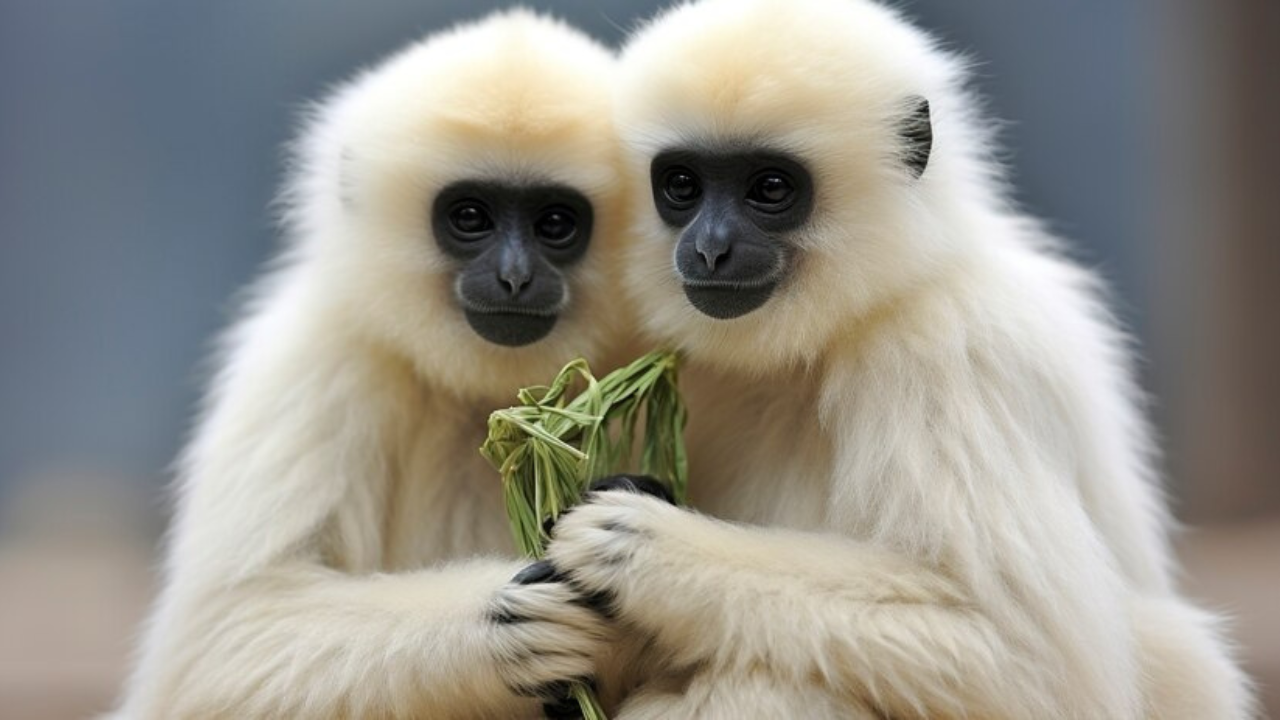Introduction to Albino Monkeys
Step into the captivating world of albino monkeys, where rarity meets beauty in a unique blend that fascinates wildlife enthusiasts and casual observers alike. These striking creatures stand out from their peers with their snow-white coats and vibrant red or pink eyes, creating an enchanting contrast to the lush green canopies they inhabit. But what lies beneath this stunning exterior? Join us on a journey through Albino-Monkey.net as we uncover the intriguing genetics behind albinism, explore their habitats around the globe, and delve into the behaviors that make them so special. Whether you’re a seasoned researcher or simply curious about these extraordinary beings, there’s much to discover in understanding these rare primates and why they deserve our attention and protection.
The Genetics of Albinism in Monkeys
Albinism in monkeys results from a genetic mutation affecting melanin production. This pigment is crucial for coloration in skin, fur, and eyes.
The primary genes involved are TYR, OCA2, and SLC45A2. When these genes malfunction, the monkey’s body fails to produce adequate melanin. The outcome is strikingly white or cream-colored fur and pinkish eyes.
This condition can occur across various monkey species. Yet it remains rare due to its recessive nature. Both parents must carry the gene for offspring to exhibit signs of albinism.
Interestingly, albino monkeys face unique challenges in their natural habitats. Their lighter coloration makes them more noticeable to predators while also impacting social interactions with others of their kind.
Understanding this genetic phenomenon sheds light on biodiversity within primate populations and raises awareness about conservation needs specific to these extraordinary creatures.
Where Can Albino Monkeys be Found?
Albino monkeys are incredibly rare and can be found in various regions across the globe. These unique creatures primarily inhabit tropical rainforests, where they blend into their lush surroundings despite their striking appearance.
Countries like Brazil and Colombia are often highlighted for sightings of albino monkeys. The Amazon rainforest provides a suitable habitat, teeming with biodiversity. Here, these primates navigate through dense foliage while searching for food.
In some cases, albino specimens have been spotted in wildlife sanctuaries or rehabilitation centers dedicated to preserving endangered species. Conservation efforts often focus on protecting these extraordinary animals from threats such as poaching and habitat destruction.
While they remain elusive in the wild, each sighting offers a glimpse into the enchanting world of albino monkeys. Their rarity adds to their allure, making every encounter truly special for researchers and nature enthusiasts alike.
Unique Characteristics and Behaviors of Albino Monkeys
Albino monkeys possess distinct characteristics that set them apart from their peers. Their striking white fur and pinkish skin make them easily recognizable in the wild. These unique features arise from a lack of melanin, which gives these primates their unusual appearance.
Behaviorally, albino monkeys often exhibit more cautious tendencies. Due to their visibility, they may be more vulnerable to predators. As a result, they might stay closer to dense foliage for protection or rely on the companionship of others for safety.
Social interactions can also differ among albino individuals. They sometimes face challenges in establishing dominance within groups due to their contrasting appearances. However, this doesn’t hinder the bond they share with fellow troop members; instead, it adds an intriguing layer to their social dynamics.
In terms of communication, albino monkeys are just as vocal and expressive as any other monkey species. Their calls resonate through the forest canopy just like those of their darker counterparts.
Conservation Efforts for Albino Monkeys
Conservation efforts for albino monkeys are gaining momentum as awareness grows about their unique status. These rare primates face numerous challenges, primarily due to habitat loss and poaching.
Organizations dedicated to wildlife preservation are implementing targeted strategies aimed at protecting these animals in the wild. Habitat restoration is a critical focus, with initiatives designed to reforest areas where populations have dwindled.
Education plays a significant role too. By raising public awareness about the plight of albino monkeys, conservationists hope to reduce stigma and promote empathy towards these fascinating creatures.
Research projects are underway to monitor existing habitats and assess population numbers. This data helps guide effective conservation measures tailored specifically for albino species.
Collaborative efforts between local communities and international organizations also foster sustainable practices that benefit both people and wildlife alike. Such partnerships strengthen the foundation needed for long-term protection of these extraordinary monkeys.
Myths and Misconceptions about Albino Monkeys
Many myths surround albino monkeys, often fueled by misinformation and superstition. One common misconception is that they are weak or sickly due to their lack of pigmentation. In reality, these monkeys can be just as strong and healthy as their normally pigmented counterparts.
Another prevalent myth depicts albino monkeys as harbingers of bad luck. Such beliefs can lead to unnecessary fear and even harm towards these unique creatures. It’s essential to recognize that albinism is merely a genetic variation, not an omen.
Some people think all albino animals have red eyes, but this isn’t always true with primates. Albino monkeys may exhibit different eye colors depending on the species and individual genetics.
Understanding these misconceptions helps promote awareness about the realities of albinism in the animal kingdom while fostering compassion for these remarkable primates.
The Importance of Understanding and Protecting Albino Monkeys
Understanding albino monkeys is essential for appreciating biodiversity. Their unique appearance and rarity offer insights into genetic variations that can inform broader scientific studies.
Protecting these remarkable creatures is crucial not only for their survival but also for maintaining ecosystem balance. Albino monkeys are often more vulnerable to predators due to their lack of pigmentation, making conservation efforts vital.
Education plays a key role in fostering respect and care for these animals. The more we learn about them, the better equipped we become to advocate for their protection.
Raising awareness helps dispel myths surrounding albinism. This understanding encourages responsible behaviors towards wildlife and supports initiatives aimed at preserving natural habitats.
Engaging communities in conservation efforts fosters a sense of stewardship, ensuring that future generations can appreciate the beauty of albino monkeys in the wild.
Conclusion: Appreciating the Beauty of These Rare Creatures
The world of albino monkeys is both captivating and complex. These rare creatures, with their striking white fur and pinkish eyes, remind us of the beauty that exists in nature’s diversity. Their unique characteristics not only make them visually stunning but also provide rich insights into genetics and adaptation.
Understanding these monkeys goes beyond just admiring their appearance. It invites a deeper appreciation for wildlife conservation efforts aimed at protecting them from threats like habitat loss and poaching. Each albino monkey holds an important place in its ecosystem, serving as a reminder of our responsibility to safeguard biodiversity.
As we learn more about these fascinating primates through resources like Albino-Monkey.net, it becomes clear that they deserve our attention and protection. By fostering awareness around their existence, we contribute to the preservation of species that are often misunderstood or overlooked.
Take a moment to appreciate the delicate balance of life that allows such extraordinary beings to exist within our ecosystems. The allure of albino monkeys transcends mere curiosity; it reflects a profound connection between humans and the natural world around us.











